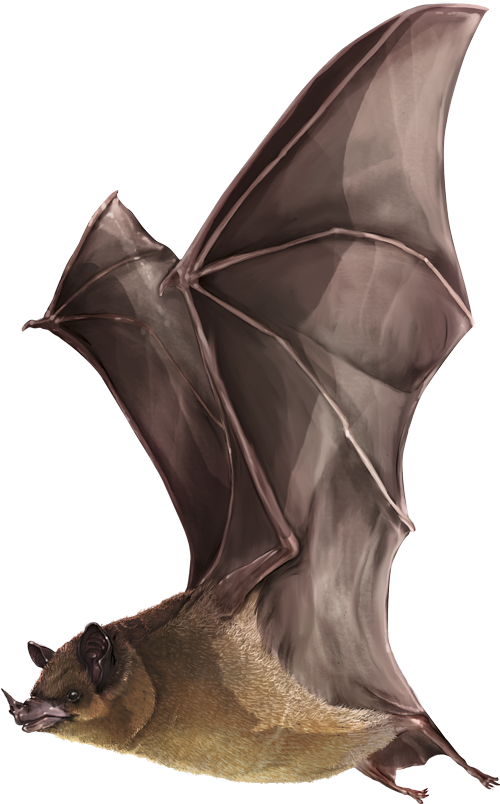301
The National Pollinator Strategy
A national commitment
Alejandro ParraInstituto Alexander von Humboldt Rodrigo MorenoInstituto Alexander von Humboldt Ricardo ClaroIndependienteExample of a web of interactions between different types of pollinators.
types of pollinators
Flies
Bees
Wasps
Moths
Hummingbirds
Bats
Beetles
Butterflies
The Strategy proposes specific goals for consolidating information on pollinator diversity and its relationship with the environment in order to guarantee ecosystem services offered by pollinators.
In order for processes such as nutrient cycling and groundwater recharge to occur, ecosystems depend not only on their diversitybut also on the interaction between their components1-3. Given that these ecosystem services benefit human beings considerably2-5, there has been interest in their study, inventory, and valuation4. One of these services is pollination, which causes plant reproduction and consequently determines food production6-8. However, agricultural development and other anthropic activities have deteriorated the ecosystems in which pollinators live9. This decline is due to causes such as deforestation, habitat fragmentation, urban expansion, exotic species introduction, and environmentally aggressive agricultural practices.
In many places around the world, including Colombia, initiatives have been created to identify capabilities and practices that are necessary for pollinator protection. Their objective has been to improve food security, nutrition, and life quality of those who depend on pollination as an ecosystem service10.In the context of the Convention on Biological Diversity (CBD)11 and its mission to articulate scientific knowledge with society at large and the conservation of biodiversity, the Humboldt Institute has assumed the challenge of planning strategies for the conservation of pollinators. Within these strategies the National Pollinator Strategy stands out as an initiative that promotes the creation and management of information on species diversity.
Although the Strategy is currently being structured, some of its approaches are as follows: create conscience and knowledge about the importance of pollination, assess environmental policies concerning this ecosystem service, and plan and modify productive systems in order to diminish habitat deterioration that is caused by our actions. Once the strategic goals are established, a plan of action will be authorized and executed with the figures that can and should contribute with the proposed tasks.
The need of gestating the Strategy is crucial because Colombia has a significant agricultural activity that currently produces 10,713 tons of fruit and vegetables12 (it should be highlighted that, in the case of fruit trees, 98% are dependent on pollination services12). In addition, it is estimated that Colombian territory houses a countless number of potential pollinating species: 1,889 birds, 398 bees, and 3,274 butterflies13,among others. These species are not only essential for agricultural production but are also important in order to assure the survival of wild plant populations. It is therefore necessary to apply the Strategy in both transformed and natural environments with an ecosystem approach that articulates environmental, economic and human components.
SOCIETY
Tagua, or ivory-nut, is extracted from the seeds of Ivory-nut Palm and used in crafts made by different communities in Colombia. Its production depends on the pollinators that carry pollen between male and female inflorescences because the wind is not effective in transporting it along great distances.
SERVICES
Countless species have a promising economic future despite their current lack of mass commercialization. Such is the case of the Gulupa, or Purple Passionfruit, which greatly depends on pollination for reproduction.
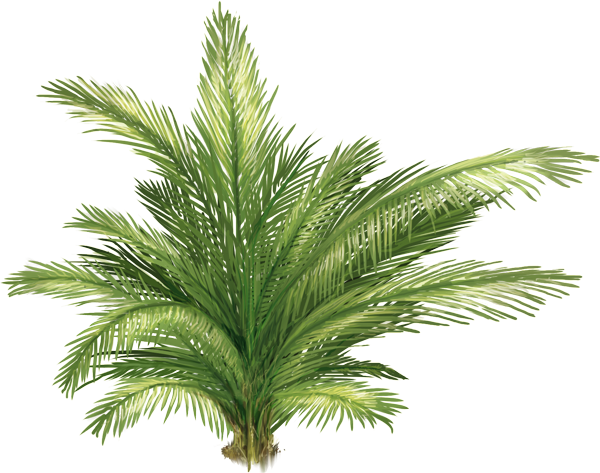
Ivory-nut Palm
Phytelephas seemannii > see species sheet Xantophygus sp.
Xantophygus sp. Amazoncharis sp.
Amazoncharis sp. Oxytrigona daemoniaca
Oxytrigona daemoniaca Partamona sp.
Partamona sp. Trigona sp.
Trigona sp. Drosophila sp.
Drosophila sp.
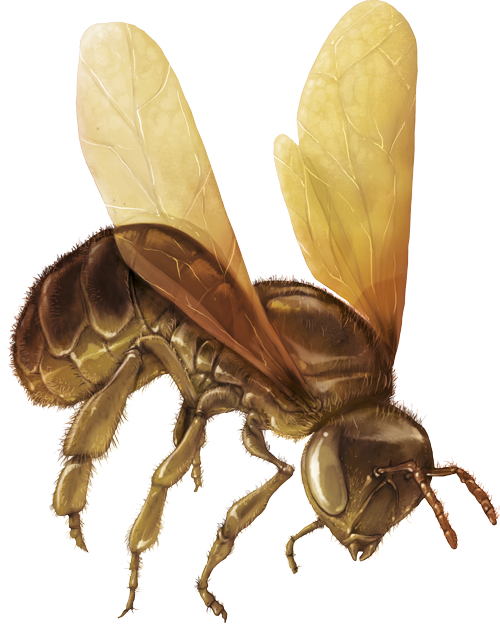
Stingless Bee
Trigona amaltheaDIVERSITY
The survival of plant communities in forests depends on a web of interactions in which different organisms participate. They may have great importance in sustaining the system, so they should be a conservation priority. The Indigo-capped Hummingbird is a potentially vulnerable species due to its reduced distribution (it is endemic to Colombia).
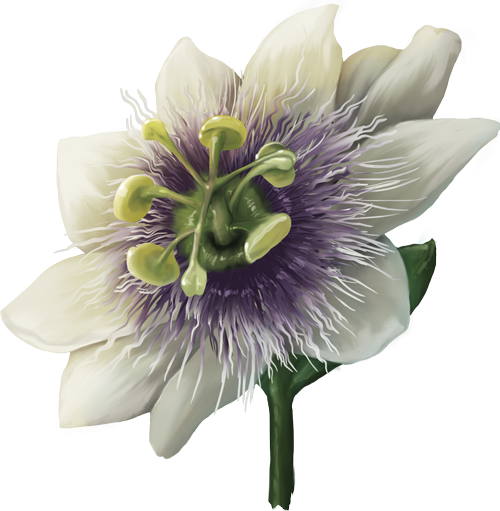
Gulupa
Passiflora edulis > see species sheet Paratrigona eutaniata
Paratrigona eutaniata Xylochopa frontalis
Xylochopa frontalis Xylochopa lachnea
Xylochopa lachnea Bombus atratus
Bombus atratus Eulaema cingulata
Eulaema cingulata Epicharis sp.
Epicharis sp. Geotrigona sp.
Geotrigona sp. Trigona fulviventris
Trigona fulviventris Frieseomelitta sp.
Frieseomelitta sp. Tetragonisca angustula
Tetragonisca angustula Apis mellifera
Apis mellifera Sciaridae
Sciaridae Dapsiops sp.
Dapsiops sp. Amazilia tzacatl
Amazilia tzacatl Vespidae
Vespidae Hesperidae
Hesperidae
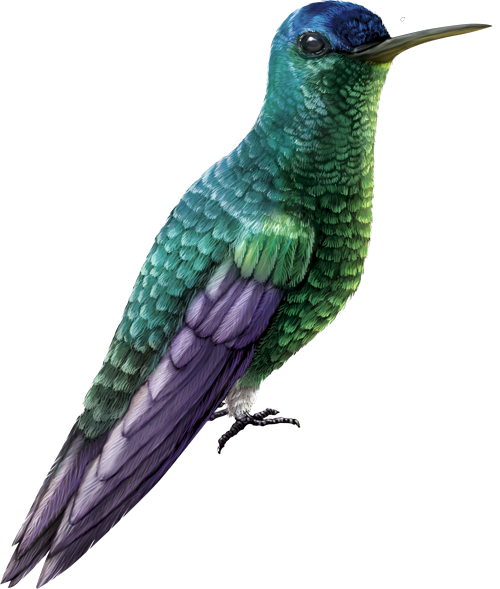
Indigo-capped Hummingbird
Amazilia cyanifronsSPECIALIZATION
Some pollinating systems include a varied number of plant and pollinator species, whereas others are composed of specific relations shaped by specialized habits or morphologies. The Dagger Cactus, for example, depends on nocturnal pollinators because it only flowers at night.

Gulupa
Passiflora edulis > see species sheet Paratrigona eutaniata
Paratrigona eutaniata Xylochopa frontalis
Xylochopa frontalis Xylochopa lachnea
Xylochopa lachnea Bombus atratus
Bombus atratus Eulaema cingulata
Eulaema cingulata Epicharis sp.
Epicharis sp. Geotrigona sp.
Geotrigona sp. Trigona fulviventris
Trigona fulviventris Frieseomelitta sp.
Frieseomelitta sp. Tetragonisca angustula
Tetragonisca angustula Apis mellifera
Apis mellifera Sciaridae
Sciaridae Dapsiops sp.
Dapsiops sp. Amazilia tzacatl
Amazilia tzacatl Vespidae
Vespidae Hesperidae
Hesperidae
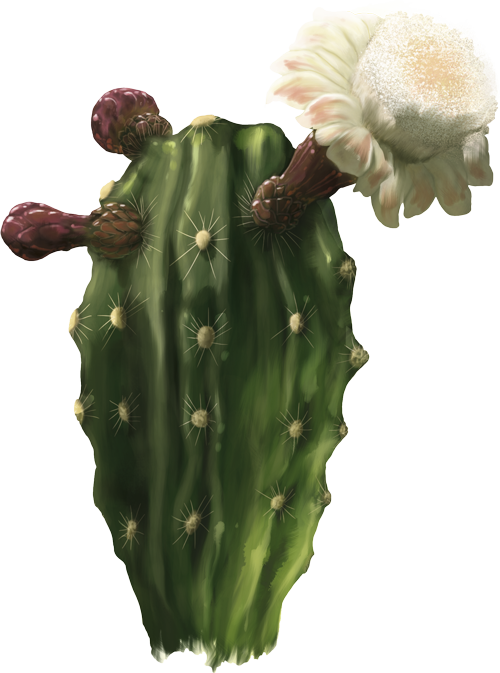
Ivory-nut Palm
Phytelephas seemannii > see species sheet Sturna lilum
Sturna lilum Carolla perspicillata
Carolla perspicillata Sphingidae
Sphingidae Hamadryas februa
Hamadryas februa
